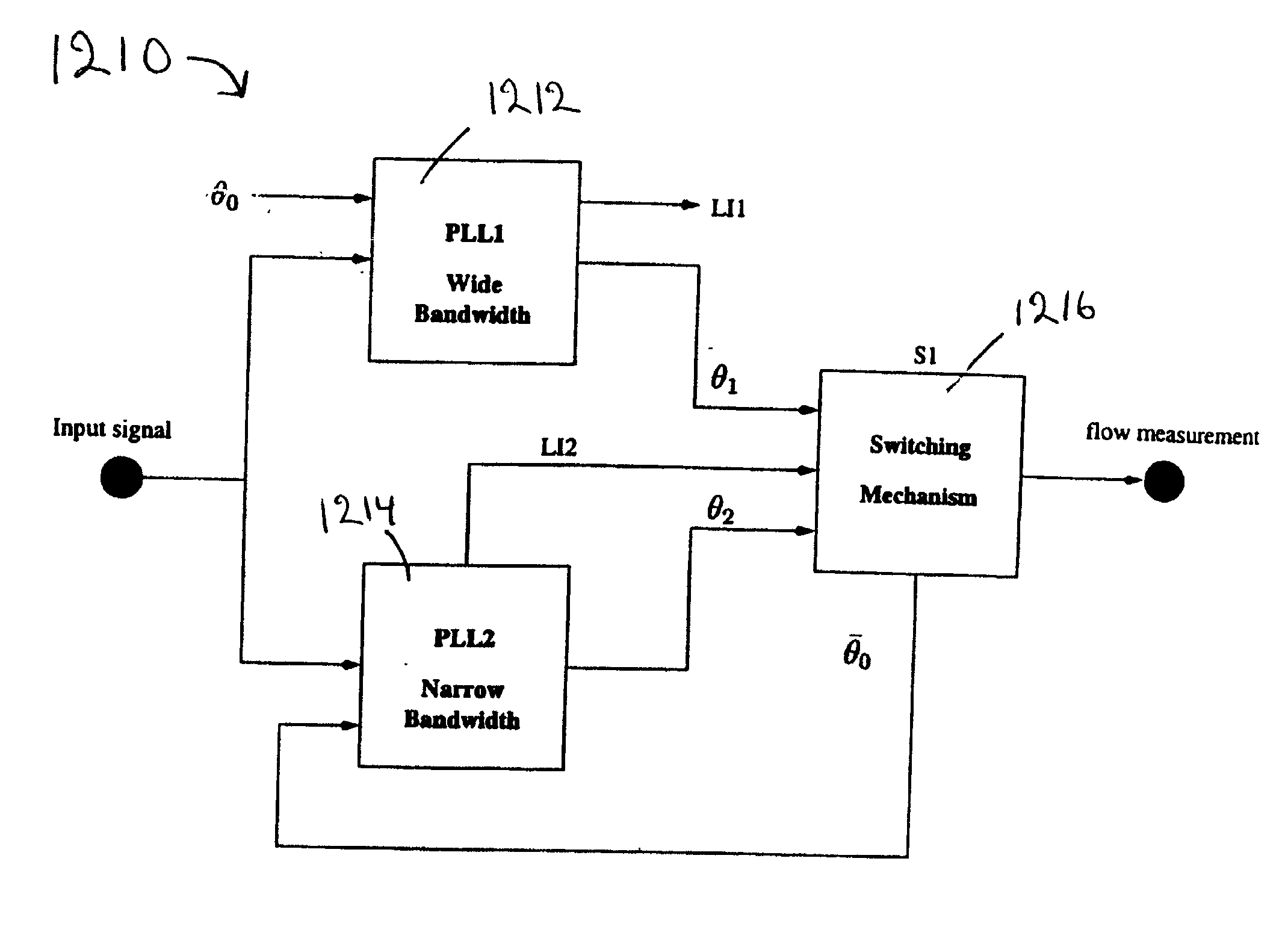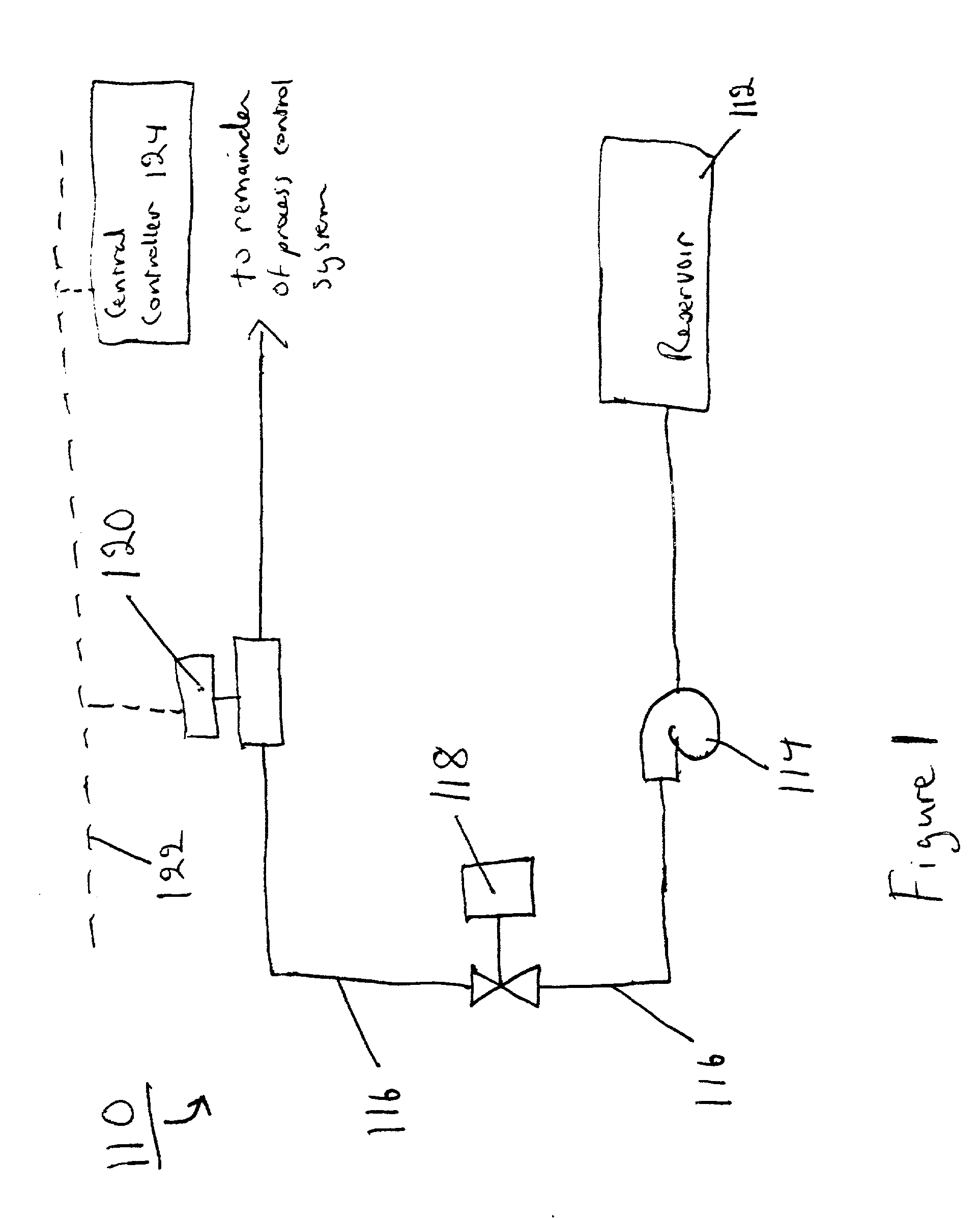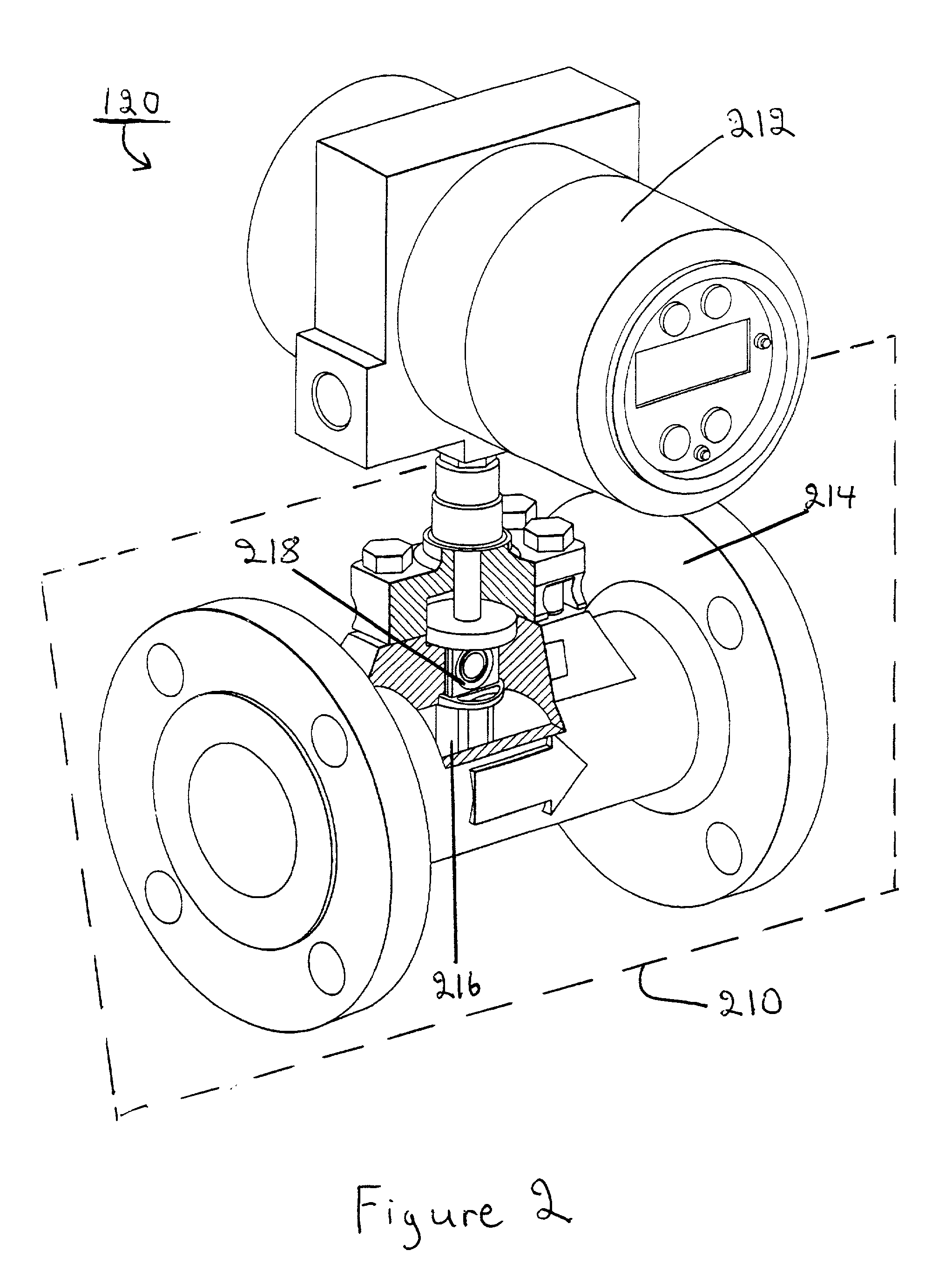Vortex flowmeter
a flowmeter and vortex technology, applied in the direction of instruments, liquid/fluent solid measurement, volume/mass flow by dynamic fluid flow effect, etc., can solve the problems of unreliability of conventional measurement, increased uncertainties in flow rate measurement, and/or slower determination of flow rate, so as to improve the accuracy of flow rate measurement and achieve greater accuracy and speed.
- Summary
- Abstract
- Description
- Claims
- Application Information
AI Technical Summary
Benefits of technology
Problems solved by technology
Method used
Image
Examples
Embodiment Construction
[0055] Improvements to vortex flowmeter signal processing in both digital and analog implementations are provided.
[0056] FIG. 1 illustrates a simplified process control system 110, or flow rig, which is one implementation in which the vortex flowmeter can be used. The flow rig 110 may include a reservoir 112, a pump (e.g., a centrifugal pump) 114, conduit portions 116 (e.g., pipes having a 2 inch diameter), a valve 118 to control the flow rate, and a vortex flowmeter 120. Various other process control devices or field devices may be included in the process control system 110, depending on the specific process control application. Furthermore, the process control system 110 may include a communication network 122 for monitoring and controlling the various devices of the process control system 110.
[0057] The communication network 122 can be implemented using a typical two-wire communication configuration. The communication network 122 can provide analog (e.g. 4-20 mA signals), digital...
PUM
 Login to View More
Login to View More Abstract
Description
Claims
Application Information
 Login to View More
Login to View More - R&D
- Intellectual Property
- Life Sciences
- Materials
- Tech Scout
- Unparalleled Data Quality
- Higher Quality Content
- 60% Fewer Hallucinations
Browse by: Latest US Patents, China's latest patents, Technical Efficacy Thesaurus, Application Domain, Technology Topic, Popular Technical Reports.
© 2025 PatSnap. All rights reserved.Legal|Privacy policy|Modern Slavery Act Transparency Statement|Sitemap|About US| Contact US: help@patsnap.com



